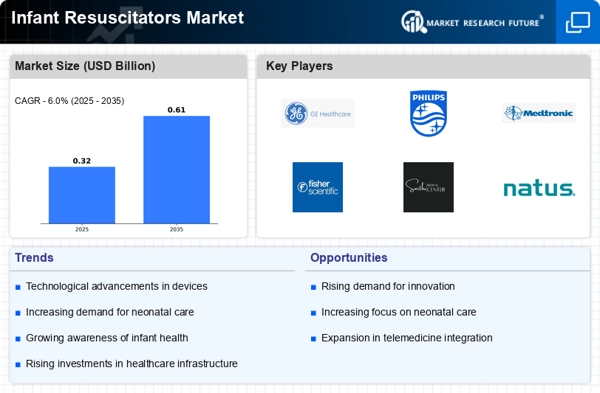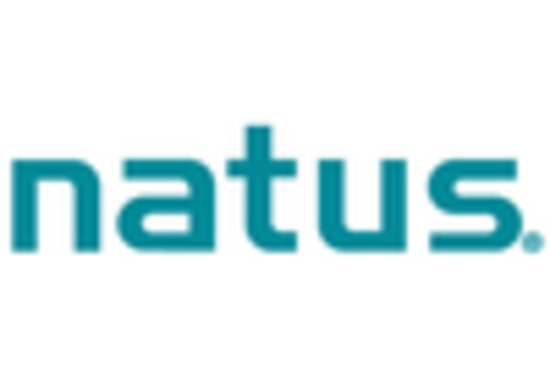Growing Awareness of Neonatal Care
The growing awareness of neonatal care is significantly influencing the Infant Resuscitators Market. As healthcare providers and parents become more informed about the critical importance of immediate care for newborns, the demand for effective resuscitation equipment is expected to rise. Educational initiatives and campaigns aimed at promoting neonatal health have contributed to this heightened awareness, leading to increased investments in healthcare infrastructure. Hospitals are now prioritizing the acquisition of high-quality infant resuscitators to ensure they can provide optimal care during emergencies. This trend is further supported by data indicating that improved neonatal care practices can lead to a reduction in infant mortality rates. As a result, the Infant Resuscitators Market is poised for growth as stakeholders recognize the necessity of equipping facilities with the best available technology.
Rising Incidence of Neonatal Emergencies
The increasing incidence of neonatal emergencies is a critical driver for the Infant Resuscitators Market. Statistics indicate that approximately 15 million infants are born preterm each year, leading to a heightened risk of respiratory distress and other complications. This trend necessitates the availability of effective resuscitation equipment, as timely intervention can significantly improve survival rates. Hospitals and healthcare facilities are thus compelled to invest in advanced infant resuscitators to ensure they are equipped to handle such emergencies. The demand for these devices is expected to rise as healthcare providers recognize the importance of immediate and effective resuscitation in improving neonatal outcomes. Consequently, the Infant Resuscitators Market is likely to experience substantial growth driven by this increasing need for specialized equipment.
Increase in Birth Rates in Developing Regions
The increase in birth rates in developing regions is a significant factor driving the Infant Resuscitators Market. As populations grow, the demand for healthcare services, particularly maternal and neonatal care, intensifies. Many developing countries are experiencing a surge in birth rates, which correlates with a rising need for effective resuscitation equipment to address potential complications during childbirth. This trend is prompting healthcare systems to prioritize investments in infant resuscitators to improve neonatal survival rates. Furthermore, international organizations are often involved in initiatives aimed at enhancing healthcare infrastructure in these regions, thereby increasing the availability of essential medical devices. Consequently, the Infant Resuscitators Market is expected to expand as healthcare providers respond to the growing needs of newborns in these areas.
Regulatory Support and Funding for Healthcare
Regulatory support and funding for healthcare initiatives are vital drivers of the Infant Resuscitators Market. Governments and health organizations are increasingly recognizing the need for improved neonatal care, leading to the establishment of policies that promote the use of advanced medical equipment. Funding programs aimed at enhancing healthcare facilities, particularly in underserved areas, are facilitating the acquisition of infant resuscitators. This financial backing not only encourages hospitals to invest in necessary equipment but also ensures that healthcare providers are compliant with evolving standards and regulations. As a result, the Infant Resuscitators Market is likely to benefit from this supportive regulatory environment, which fosters innovation and accessibility in neonatal care.
Technological Innovations in Resuscitation Devices
Technological innovations play a pivotal role in shaping the Infant Resuscitators Market. Recent advancements have led to the development of more efficient and user-friendly resuscitation devices, which are equipped with features such as real-time monitoring and automated functions. These innovations not only enhance the effectiveness of resuscitation efforts but also reduce the training burden on healthcare professionals. For instance, devices that integrate digital technology allow for better data collection and analysis, which can inform future practices. As hospitals seek to improve patient care and outcomes, the adoption of these advanced technologies is likely to accelerate, thereby driving growth in the Infant Resuscitators Market. The ongoing research and development efforts in this sector suggest a promising future for innovative resuscitation solutions.


















Leave a Comment